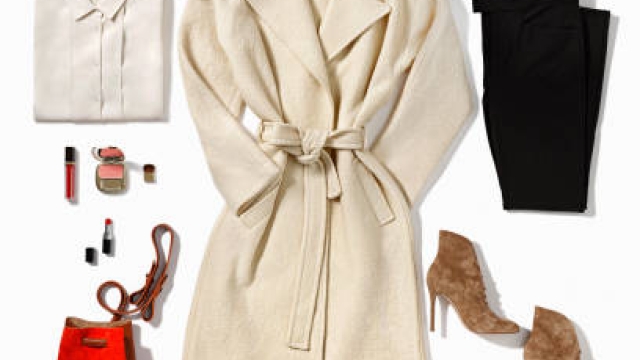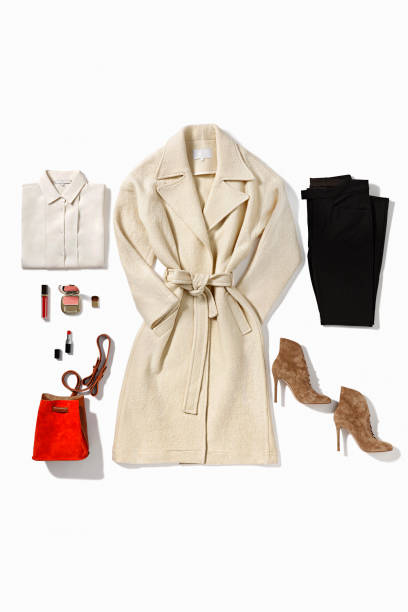Welcome to the world of women’s fashion, a realm where self-expression meets creativity, and trends evolve with every passing season. The captivating beauty of apparel has always played a significant role in enhancing women’s confidence and allowing them to showcase their unique personalities. As we kickstart an era of innovation and technology, the future of women’s fashion promises to revolutionize the way we perceive and engage with apparel.
In the dynamic landscape of women’s fashion, the interplay between design, function, and sustainability is taking center stage. Modern women are seeking clothing that not only complements their style but also aligns with their values. From eco-friendly fabrics to ethical production practices, the apparel industry is undergoing a transformative shift towards sustainability. As consumers become more conscious about the environmental impact of their choices, fashion brands are stepping up by incorporating eco-friendly materials and adopting transparent supply chains.
Moreover, technology is acting as a catalyst for change within women’s fashion, paving the way for exciting possibilities. With the advent of virtual reality and augmented reality, shoppers can now immerse themselves in virtual showrooms, trying on outfits without even stepping foot inside a physical store. Virtual stylists and AI-powered fashion assistants are becoming commonplace, providing personalized recommendations and helping women navigate the vast ocean of fashion choices.
With all these advancements on the horizon, it’s an exhilarating time to explore the future of women’s fashion. From sustainable practices to the seamless integration of technology, the industry is witnessing a remarkable evolution. Join us as we delve deeper into this captivating journey where creativity, innovation, and empowerment unite to transform the way women define their style.
Sustainable Innovations in Women’s Fashion
Sustainable fashion is gaining momentum in the world of women’s apparel. With a growing focus on environmental consciousness, designers are revolutionizing the industry with innovative practices that promote sustainability without compromising style and quality.
- Leather Backpack Women
-
Eco-friendly Materials: One key aspect of sustainable fashion involves the use of eco-friendly materials. Designers are now turning to organic cotton, hemp, bamboo, and recycled fabrics to create stylish and comfortable clothing options for women. These materials not only reduce the environmental impact of fashion production but also enhance the overall durability and longevity of the garments.
-
Ethical Manufacturing: Another significant advancement in sustainable women’s fashion is the growing emphasis on ethical manufacturing processes. Brands are increasingly ensuring fair labor practices, safe working conditions, and fair wages for garment workers. By supporting companies that prioritize ethical manufacturing, women can feel confident that their fashion choices align with their values.
-
Circular Fashion: The concept of circular fashion is transforming the way women’s apparel is designed and consumed. Instead of the traditional linear model of "take-make-waste," circular fashion aims to create a closed-loop system by maximizing the lifespan of garments and minimizing waste. This includes initiatives such as clothing rental services, upcycling, and garment recycling programs, allowing women to enjoy fashion while reducing their environmental impact.
As sustainability becomes more important to consumers, these innovative practices in women’s fashion are driving positive change within the industry. By embracing eco-friendly materials, ethical manufacturing, and circular fashion, women can contribute to a more sustainable future without sacrificing style and fashion-forwardness.
Tech-Infused Trends and Designs
The fusion of technology and women’s fashion has created exciting and innovative trends in the apparel industry. With advancements in materials, manufacturing techniques, and wearable technology, designers are revolutionizing women’s fashion. From smart fabrics to 3D printing, these tech-infused trends are shaping the future of women’s apparel.
One notable trend is the incorporation of smart fabrics into clothing. These fabrics are embedded with sensors and other electronic components, allowing garments to interact with the wearer and their environment. For example, we are now seeing dresses that change color in response to body temperature or jewelry that monitors heart rate. These smart fabrics not only add a touch of modernity to our wardrobes but also provide practical functionalities.
3D printing has also emerged as a game-changer in the fashion industry. Designers are utilizing this technology to create unique and customizable pieces that were once unimaginable. From intricate patterns to avant-garde accessories, 3D printing allows for endless possibilities in design. Moreover, it reduces waste as items can be printed on-demand, minimizing the need for mass production.
In addition to fabrics and printing techniques, wearable technology has become increasingly popular. From fitness trackers to smartwatches, these accessories now seamlessly integrate into women’s fashion. They not only provide convenience but also offer valuable data and insights into our daily lives. As technology continues to advance, we can expect to see even more innovative designs that combine fashion and functionality.
The future of women’s fashion is undoubtedly intertwined with technology. With tech-infused trends and designs, we are witnessing a new era of apparel that merges style, comfort, and functionality like never before. From smart fabrics to 3D printing and wearable technology, these advancements are pushing boundaries and redefining what it means to be fashionable in the modern age.
Empowering Women through Inclusive Fashion
Breaking Stereotypes and Expanding Representation
The world of women’s fashion and apparel has been undergoing a powerful transformation in recent years, driven by the concept of inclusivity. In the past, traditional beauty standards often excluded many women, leaving them feeling invisible and underrepresented. However, the future of fashion is changing rapidly, embracing diversity and breaking down stereotypes.
Designers and brands are stepping up to the challenge of creating clothing that celebrates and empowers women of all shapes, sizes, and backgrounds. By featuring models from diverse ethnicities and body types, fashion is becoming more accessible and relatable to a wider range of individuals. This shift is not only transforming the way we perceive beauty, but also showcasing that everyone deserves to feel confident and stylish in their clothing choices.
Challenging Conventional Beauty Norms
Revolutionizing women’s fashion means challenging the conventional beauty norms that have long been embedded in the industry. Breaking away from the idea that there is one "ideal" body type, designers are embracing the uniqueness of each individual and using fashion as a means of self-expression. By providing a platform for women to explore their personal styles without fear of judgment, fashion is becoming a powerful tool for empowerment.
Through inclusive fashion, women are encouraged to embrace their authentic selves and celebrate their own beauty. No longer confined to restrictive definitions of attractiveness, women can now freely experiment with different styles and trends, allowing their clothing choices to reflect their personalities and aspirations.
Fostering a Positive Body Image
Inclusive fashion is not only about diversity in representation but also about fostering a positive body image for women. Through inclusive sizing, brands are ensuring that women of all body types can find clothing that fits and flatters them. This shift is empowering women to embrace their bodies and feel comfortable in their own skin.
Moreover, fashion is increasingly becoming a platform for dialogue and awareness surrounding body positivity and mental health. By featuring campaigns and collaborations that promote self-love, acceptance, and mental well-being, the industry is championing a holistic approach to women’s empowerment.
In conclusion, the future of women’s fashion and apparel lies in inclusivity. By challenging stereotypes, expanding representation, and fostering a positive body image, fashion has the power to empower women and redefine beauty on their own terms. Through embracing diversity, we are witnessing a revolution that is reshaping the industry, making it more inclusive and accessible to all women.

